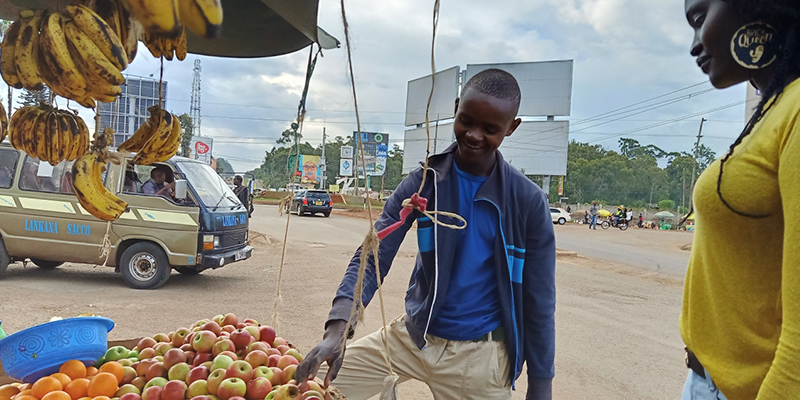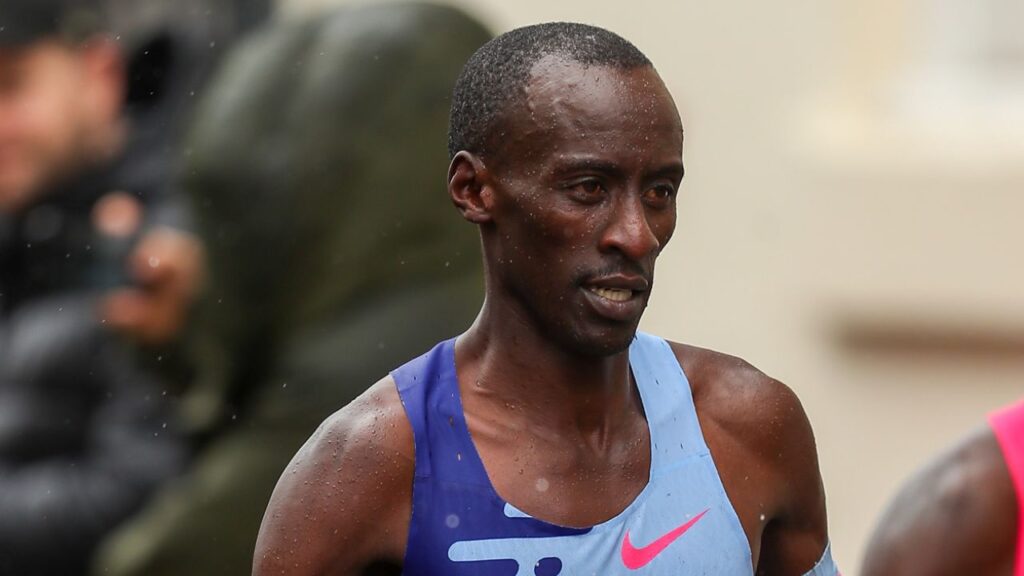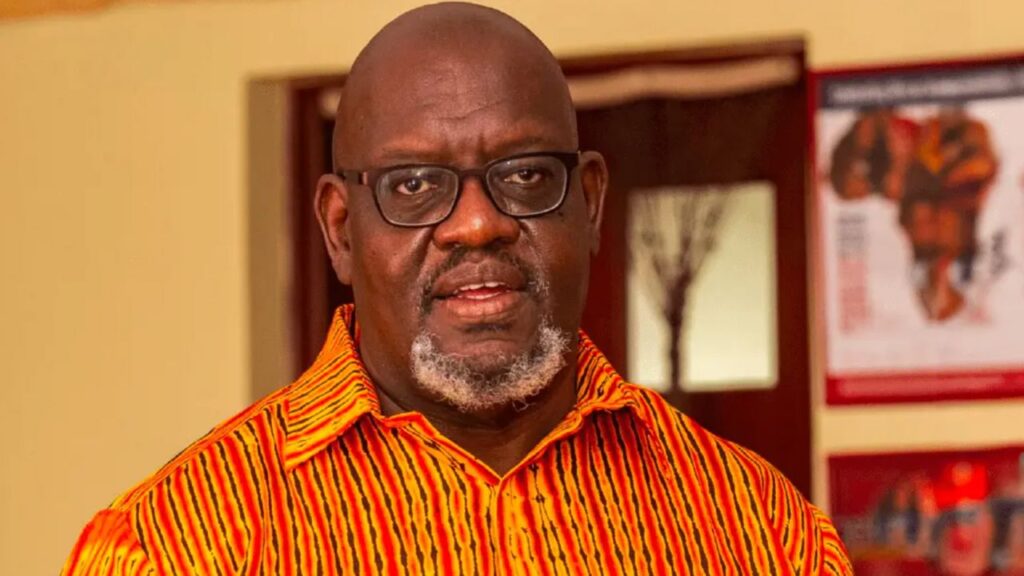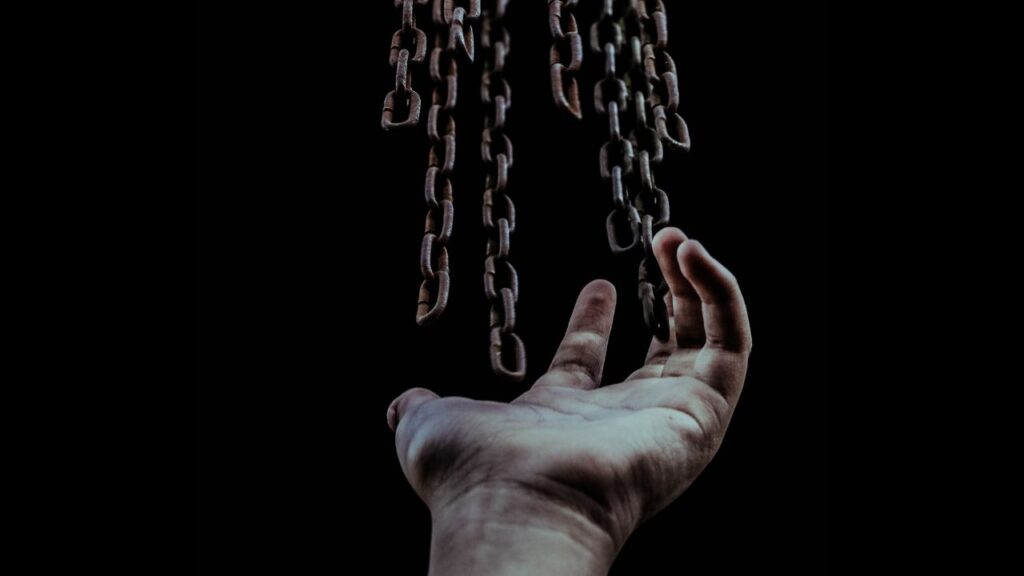“I knew that once this thing hits, business is going to slow down. My fruits aren’t covered, and every potential customer handles the fruit.”
Early evening on the 25th of March, 23-year-old Moses Njenga, a fruit and vegetable vendor swats dust and flies off his apples. His stand, made of a small, wooden table and covered with canvas, is right across from a bus stop. It is a great place to have a stall, but foot traffic is much lighter than usual today.
Kenyan Government directives restricting movement owing to the quickening spread of the COVID-19 pandemic are beginning to take root at this time, 13 days after the first case of COVID-19 was announced to the public.
Along with these restrictions, public service announcements on the importance of hand-washing with soap, use of alcohol-based hand sanitizers and coughing or sneezing etiquette are very much on the menu of content that Kenyans have been consuming. So, to keep as many customers as possible interested in buying from him, Moses turned a 10-litre container into a small water tank with a tap and bought some soap, which he points the few customers who stop by his stall to use before they begin the ritual of touching and squeezing his fruits to gauge their ripeness.
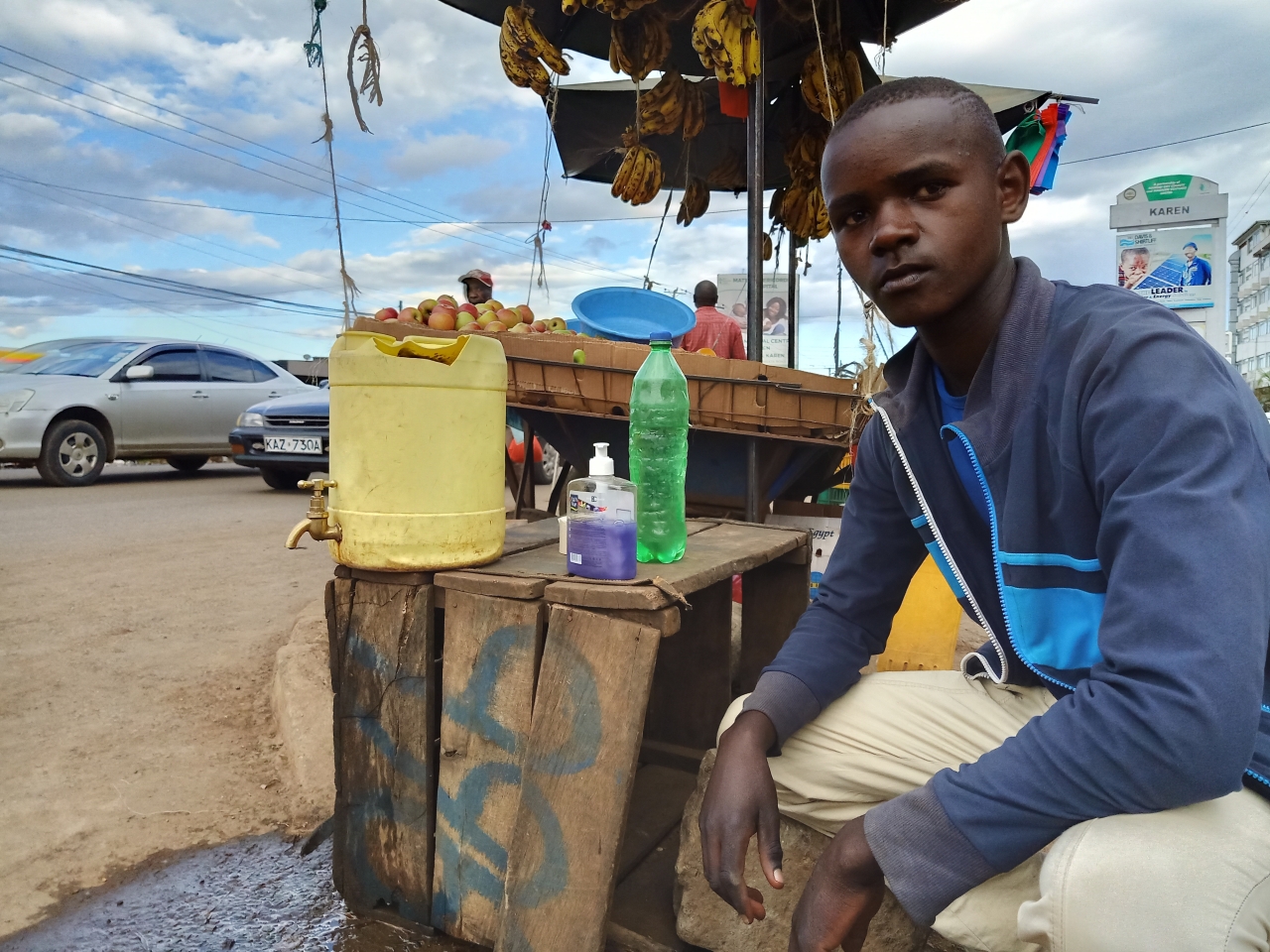
Moses works in Karen, a rich Nairobi suburb, one which until recently, was not well known as a place where you’d find big informal markets as opposed to large malls, large mansions and some of Kenya’s landed elite. He isn’t out of place here today, though.
The stretch of road from which he sells his fruit is lined with many other informal traders: street food vendors, boda boda operators (“boda boda” is Kenyan slang for motorbike taxi) and charcoal vendors. All of them ply their trade in front of a glossy mall on one side of the road, and a petrol station that also houses a popular coffee house, a pharmacy and a convenience store. The co-existence between formal businesses and informal ones is a very African symbiosis. 75% of Kenyans of working age work informally and a majority of these people depend on daily income to feed themselves and their families. This means that businesses like Moses’s are key to the survival of Kenya’s economy. Catching the virus is a concern, but the harm it will do to their ability to earn looms even largest than the virus itself.
On a good day, Moses will make 30 dollars in sales, but a small percentage of this goes to him.
“This stall doesn’t belong to me. I am an employee. I make 10% of everything I sell. So, if the government makes these restrictions worse, what is going to happen to me?”
Moses’s stall is also an important vantage point for one to stand from, and observe the changes taking place within and between different demographics of Kenyan society because of COVID-19.
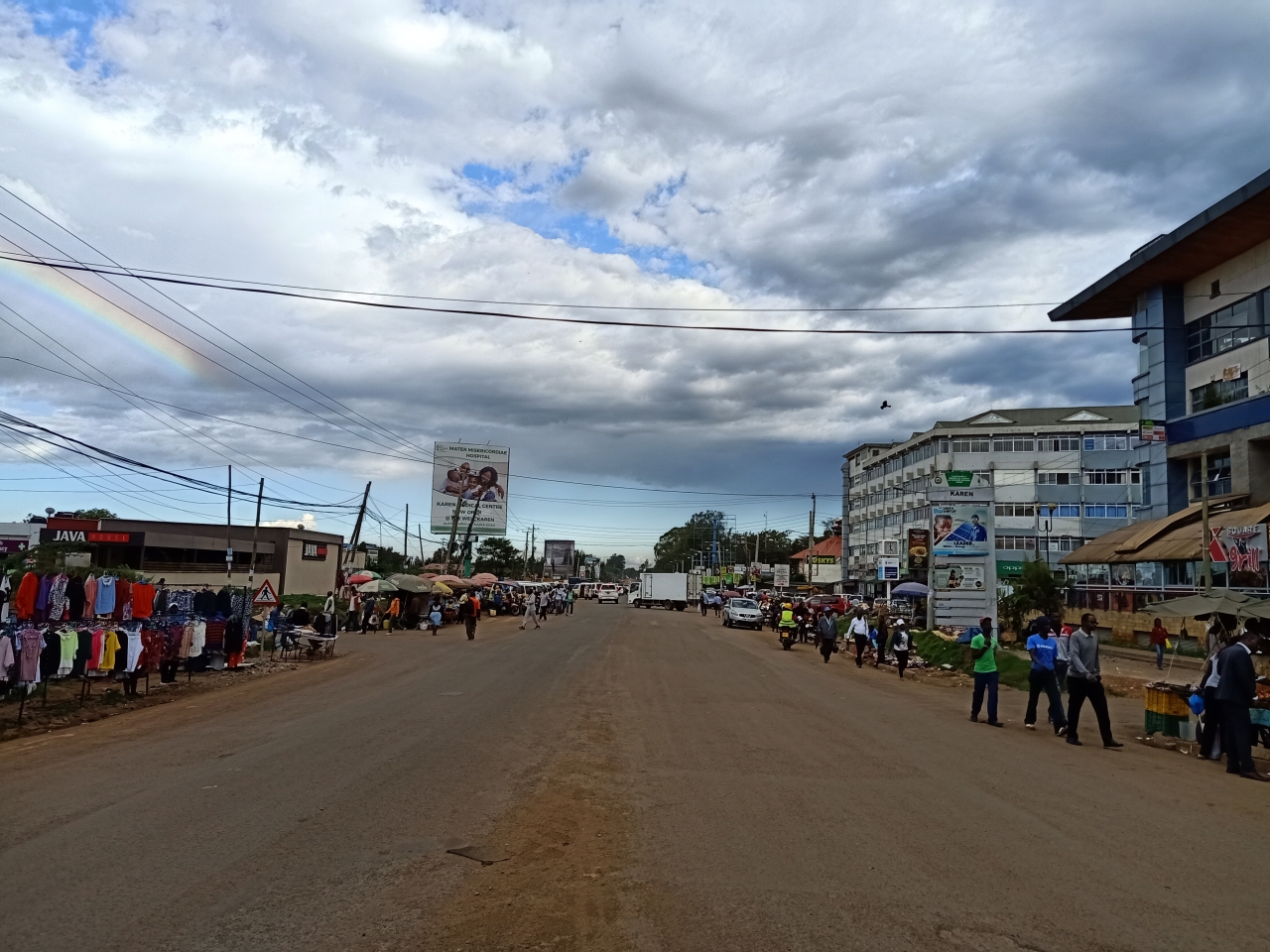
There are noticeably fewer cars on the road here; Kenyans who are tapped into the formal economy are making plans to work from home, practice social distancing and wait out the virus. On the street, most informal traders are out, as usual, hoping to make some money before the end of the day. Across from Moses, Johnson Ray Mchama, who sells second-hand clothes, beckons me over to share his experience since COVID-19 landed on Kenyan shores.
“I made one sale today. One. Yesterday I didn’t sell anything. I made one sale the day before. This Corona has really disrupted our flow of business,” he laments.
Spreading faster than the virus this evening are rumours that the Kenyan government will be announcing a total lockdown on movement across the country. Johnson weighs in.
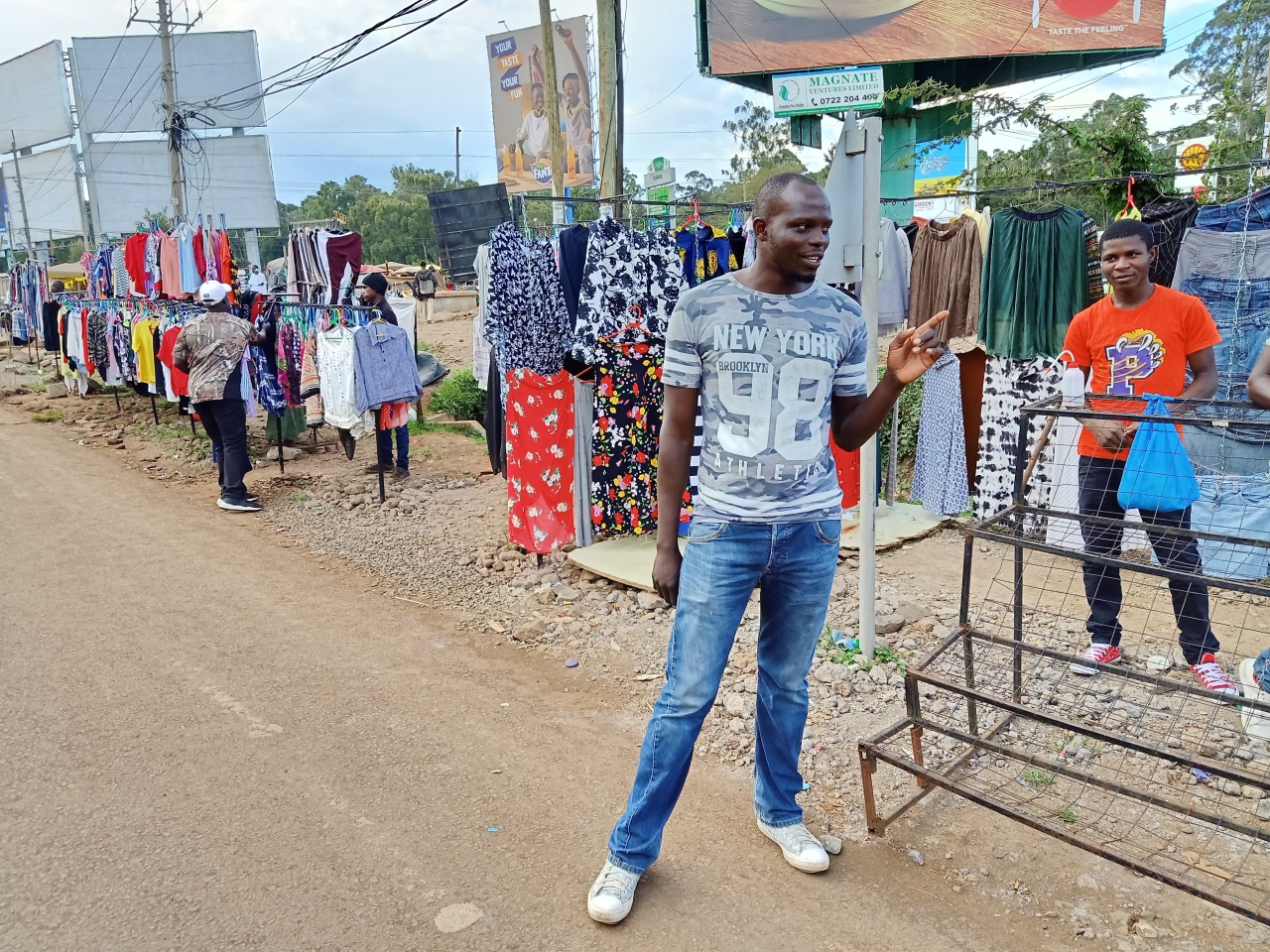
“If the government asks us to stay at home what will we do? Die in our homes? The government needs to think of us even as it plans for lockdowns,” he says.
At 5 pm on this same day, millions tune in to listen to the government’s daily briefing on the spread of the virus. Anxiety builds, and WhatsApp messages ping from inbox to inbox with anonymous opinions about the coming lockdown. A lockdown isn’t announced. Kenya’s Cabinet Secretary in the Ministry of Health does announce more restrictions. A dusk to dawn curfew beginning March the 27th. Kenyans will have to be in their homes by 7 pm every day, and can only leave after 5 am the following day.
If the government asks us to stay at home what will we do? Die in our homes? The government needs to think of us even as it plans for lockdowns
On the first evening of the curfew, I check in with Moses at 5 pm, two hours before the curfew begins. He is putting away his fruits, preparing to close for the day:
“I have no choice but to obey what the government says, I don’t want to have any run-ins with the police.”
His choice of words is spot on, as just as our brief interview concludes, Kenya’s police force is out across the country, enforcing the curfew with whips, batons and teargas. In Mombasa, a Kenyan city on the coast of the Indian Ocean, crowds of hundreds of people trample upon one another trying to get away from the police. Videos shot by members of the public show a crowd that was lining up to use the ferry being violently dispersed. The following day, a 13-year old boy, Yassin Hussein Moyo, was hit by a stray bullet and killed while standing at the balcony of his home, watching the police enforce the curfew in Kiamaiko, one of Nairobi’s poorer neighbourhoods. Kenya’s President Uhuru Kenyatta would later issue an apology for the violence meted out against members of the public as the quarantine was enforced, but just a week later, as the terms of restrictions were amended, yet another foible would expose the contradictions between policy directives and the reality of the common man’s daily life.
On April the 5th, Kenyatta announced a 21-day restriction of movement in and out of the Nairobi metropolitan area. Like many cities across the continent, millions of people who work in the city don’t live there, their daily travel rituals crossing in and out of the cities that they work in. So it wasn’t surprising that the day after this directive was made, numerous Kenyans were seen trying to evade roadblocks on the main highways in and out of the city in order to get to their jobs. Kenya, it would appear, is caught between the difficulty of what needs to be done to slow the spread of COVID-19, and what its majority must do to survive on a daily basis.
Catching the virus is a concern, but the harm it will do to their ability to earn looms even largest than the virus itself.
Like Moses, many of the people who live in Kiamaiko are paid daily wages or earn money directly from an informal trade. Yet for all of the violence and uncertainty that has stalked Kenyans with the spread of the Corona Virus, little has come by the way of relief for those who are part of the informal market.
Tax cuts proposed by Kenyan President Uhuru Kenyatta have been criticised for leaving out members of the informal economy, who at best will be indirect beneficiaries of these measures. In a bid to control the spread of the virus in public spaces, restrictions on the number of people who can use public transport have in turn led to spikes in fares. Directives that Kenyans should wear masks while in public are also difficult to comply with. A surgical mask costs anywhere between USD 1.15 and USD 1.50. For someone like Moses, who earns USD 3 a day, adding masks to his daily budget poses a difficult dilemma.
Measures that have succeeded in countries like South Korea have been dependant on strong public healthcare systems and compliance by the public to government directives. In Kenya and other African countries, compliance with stay-at-home directives has been difficult to enforce. On the one hand, the government has chalked this up to people not taking the virus seriously enough. Ask Moses or Johnson, and they will tell you that it is because people literally can’t afford to stay at home. The numbers of those who have the virus are climbing nonetheless (check our tracker for up to date numbers).
The Ministry of Health is racing to keep the numbers as low as possible, and has scaled up testing of members of the public as the country still is in the containment phase of the pandemic. A majority of those who have been tested by the government are being housed in government-sanctioned quarantine facilities where complaints of ill-treatment and exposure to possible infection with COVID-19 abound.
Ashley Yaro, a 21-year old law student studying in Britain chose to return to Kenya as the numbers of those infected by the virus in Britain rose exponentially. She had planned to self-quarantine, and only learnt about the Kenyan government’s mandatory quarantine notice when she landed in Nairobi.
“When the airports authority officials beckoned us to come closer and tell us about the directive, we were all packed so closely together that I remember commenting to someone that if we didn’t have it before we probably have it by now.”
Her transfer into the quarantine facility she was staying at was fraught with incidents like these, but once safely in her room, there was little to worry about beyond those early moments of her arrival. Ten days into her quarantine, she posted a tweet with a single word:
“Negative”!
A lucky escape, because government announcements that would follow confirmed fears that laxity in abiding to quarantine protocols both by the quarantined and government officials overseeing the facilities came out in the numbers of infected.
“51 to 52% of the new cases we have are of people who are in quarantine facilities,” Dr. Patrick Amoth, Kenya’s Director in the Ministry of Health remarked during the government’s daily briefing on April 2nd.
Kenya’s Cabinet Secretary for Health, Mutahi Kagwe, later pointed a finger of blame at those within these facilities.
“Positive cases of people already in our quarantine facilities rank the highest; this poses a risk of more transmission, especially to those who have not taken seriously the distancing requirements”.
Nonetheless, as the quarantines wore on, more and more videos, messages and documents from those in quarantine demonstrated that they were at odds with the government. An April 5th announcement that people in specific facilities where the government had discovered flouting of protocols were to remain in quarantine for a further 14 days caused outrage. People in one facility drafted an official complaint to the Ministry of health. Some posted videos detailing the kind of anguish they underwent during this time.
“Some people think it is punitive but these are public health measures,” Dr Omu Anzala, a virologist and immunologist who is serving on the government taskforce on the COVID-19 pandemic sought to explain the government’s directives. On the horizon is an exponential rise in the number of COVID-19 cases, which threaten to overwhelm Kenya’s public healthcare system.
“We must have an exponential (growth) phase somewhere. My prediction based on everything that we are seeing everywhere else is that it is probably going to happen in four to five weeks from the first case,” says Dr Ahmed Kalebi, who founded and runs Lancet Laboratories, one of the few privately owned laboratories that has been testing the public for COVID-19.
He holds that Kenya is yet to see the worst of the spread. He isn’t wrong. Government projections put the number of COVID-19 cases at 10,000 people by the end of April.
“If you look at the number of people affected by COVID-19, the majority are aged between 30 and 59,” Dr Mercy Mwangangi, Kenya’s Cabinet Administrative Secretary for health said on April 8th as she briefed the country about the spread of the virus. The Ministry of Health has struck an increasingly serious tone as Kenya enters this critical phase in the spread of the virus. Officials have asked Kenyans to brace themselves for tough times ahead.
Fears of the impact of the COVID-19 pandemic in Kenya are shared across numerous borders on the continent owing to decades of under-investment in public healthcare facilities. Millions are also wary of the virus having shared memories of the devastation that past pandemics have wrought on the health of their families.
“So far, people can only be tested in two regions out of eight with not up to five treatment centres for more than 25 people.”
Mimi Mefo, a Cameroonian journalist covering the pandemic notes that the toll that other diseases have taken on the West African country’s public healthcare system have left Cameroon weakened in the face of the novel COVID-19 virus.
“Cameroon has barely been able to keep its healthcare system afloat before the virus struck. Patients with kidney problems do not have health centres and the right medical equipment to treat them. HIV patients were recently complaining about the lack of anti-retroviral drugs, and malaria remains a health challenge to the country,” she adds.
Inasmuch as Africa’s population is young and should be better able to cope with the virus, co-morbidities like those described by Mefo loom large with their ability to further complicate the management of the disease.
With over 750 total cases as at April 10th, Cameroon has the second-highest number of COVID-19 cases in Sub-Saharan Africa. Complicating the fight even further is the raging war between government troops and pro-secessionist troops. Cameroon’s president, Paul Biya, has reportedly not been seen in public to address the impact of this conflict on the fight to contain the Coronavirus, nor has he addressed the public regarding the virus itself since the first case was announced in early March. The country’s struggle with a leadership crisis only compounds the problems it is facing and set to face.
“Pro-independence leaders have called for a ceasefire, and the world including Cameroon are engaged in the coronavirus fight. Unfortunately, my platform continues to have daily reports of gun battles and killings indicating that the violence has continued unabated,” says Mefo.
The Economic Commission for Africa had in March forecasted that Africa could lose half its GDP.
Oil exporting nations stand to lose up to 65 billion dollars in lost revenues as trade slows down and global oil prices tumble. East African countries will have to be especially vigilant with the measures that they are taking to cushion themselves at this time, given that they were already reeling from the impact of a massive locust infestation that swept through farmlands from Ethiopia to Uganda. When crises such as the one posed by the spread of COVID-19 hit, the citizens of many African states vacate cities for their family homes in the rural countryside, opting to depend on the social welfare of community after their ability to earn a living is disrupted. Restrictions on movement in and out of capitals across Africa will disrupt this, and test African populations even further.
Striking a more hopeful tone for the continent are measures taken by some African countries on fighting the spread of COVID-19 that if held on to could see them recover faster than expected. Uganda’s decision in the opening exchanges in this fight to suspend international flights and restrict movement internally seems to be working, as the number of new cases of the pandemic trail Kenya and Rwanda’s. Having faced the spread of infectious diseases like Ebola and the Marburg virus, protocols and people ready to implement them were in place more readily than in other countries. President Yoweri Museveni announced a food distribution program targeting 1.5 million people from vulnerable communities.
Ghana’s President Nana Akufo-Addo announced that up to 400,000 Ghanaians in regions most affected by the virus had begun receiving food support, as Ghana entered its second week since restrictions on movement within the greater Accra region, Kumasi, Tema and Kasowa were announced. Addo also announced that the government would absorb water bills for all Ghanaians for the next three months and that there would be no disconnections of utilities. Micro, small and medium businesses were also the focus of Addo’s address, with a 100 million dollar soft loan scheme set up to tide these businesses over. Botswana also set up a 168 million dollar scheme to assist businesses pay their workers’ salaries.
Guinea’s government has declared that its citizens would not pay rent until December, and that public transport and access to some pharmaceuticals and basic necessities would also be free.
Kenya is caught between the difficulty of what needs to be done to slow the spread of COVID-19, and what its majority must do to survive on a daily basis.
It is the story of the people though that continues to inspire hope where government catches up to the challenges posed during this time. Kenyan political analyst and author Nanjala Nyabola says that the initiatives being taken by members of the public to fight the virus give her hope that, despite its challenges, Africa can beat COVID-19.
“What gives me hope is communities rallying around each other. In Kenya, we reacted to the fact that the disease would hit the poor harder than the rich. We have had food drives, with people doing as much as they can to help within the community. We don’t have the facilities, but we (the people) have a long history of responding to crises, mobilizing around public health. The public is trying to believe and act communally.”
She cites the work of the coalition of human rights defenders who are working in some of Nairobi’s informal settlements. They have fund-raised for water and soap bars which they are delivering door to door in these communities, and hope to scale up to the delivery of masks in these areas.
“It is creating a template for action but just needs to be scaled up. That’s the thing, people are freaked out by the threat and saying that they are screwed. They are looking at it and saying let it find us doing something.”
Back on the street that Moses and Johnson operate from, informal traders are quickly adjusting to the changes thrust upon them by COVID-19.
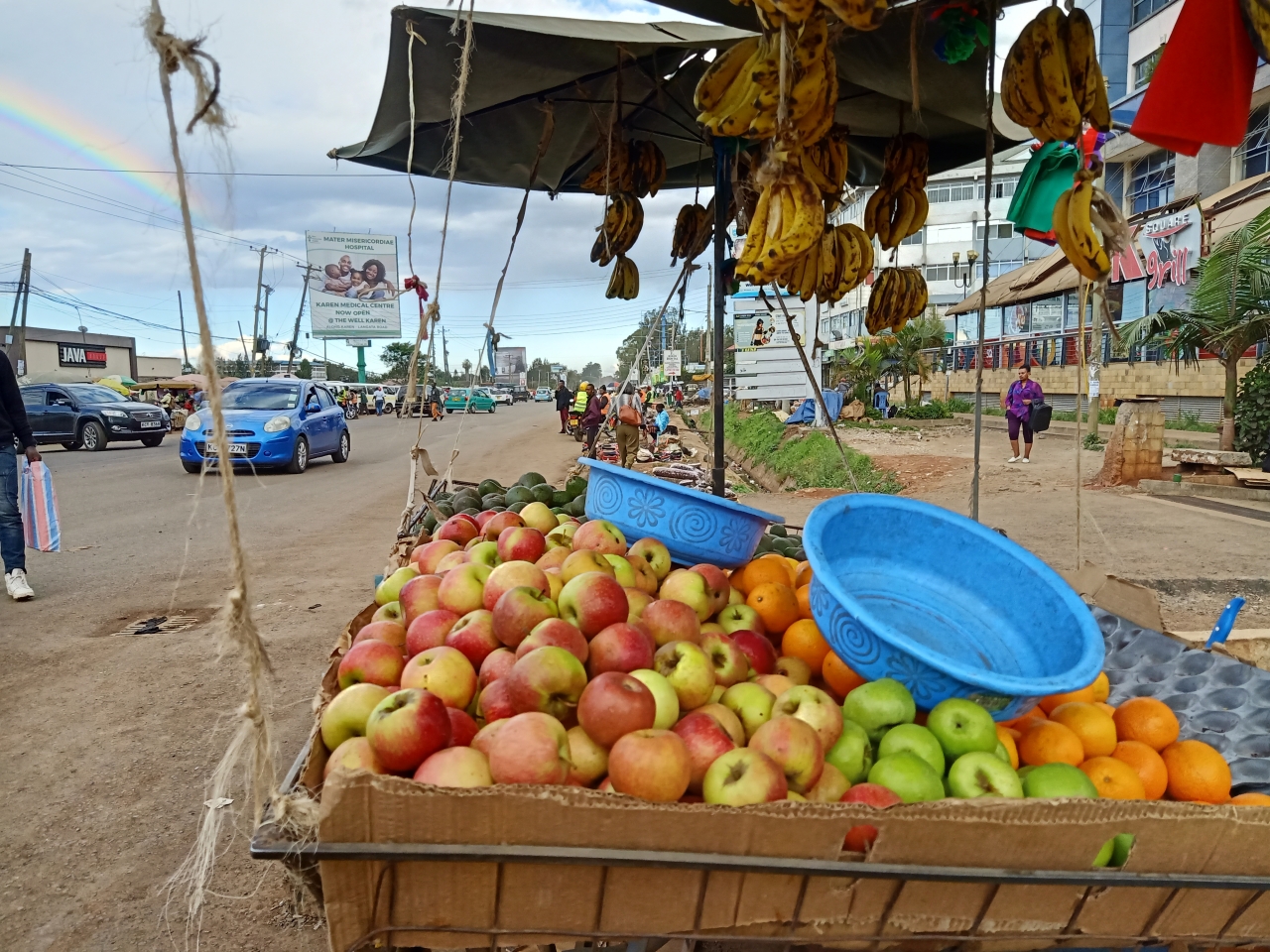
“I will come and sell again, but I won’t increase my stock”, Moses says, keenly aware about how much more perishable a day of work, and his fruit has become. A 7 pm start to the curfew means that he has to shut down two hours early in order to get home in time. Moses and the millions of people who work informally have to, by necessity, act fast, travel light and adapt to survive.
Days are fading fast too for governments to rein in the pandemic. Nyabola warns that this isn’t just a health crisis, but a phenomenon that will impact governance for a long time to come.
“It is a moment of reckoning and a moment of better decision making. That’s the fork in the road for African governments.”
This article was originally published by Africa Uncensored.

